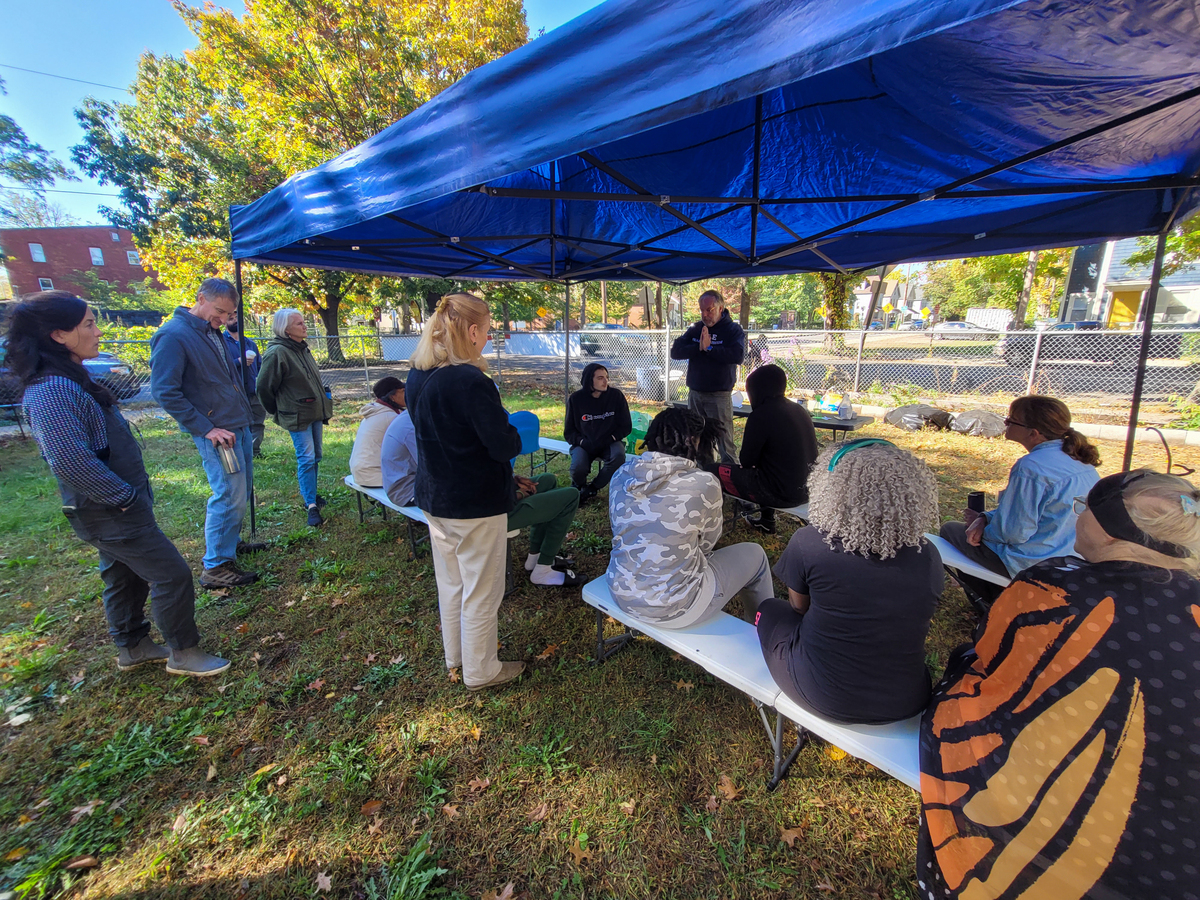Newhallville promotes native plants and pollinators at “All Things Pollinators” event
Newhallville residents and volunteers are promoting the propagation of plants native to the New England area to support the local ecosystem.

James Steele, Contributing Photographer
Plants native to the New England area are becoming increasingly rare. The effects of this disappearance ripple through the ecosystem, affecting not only the plants themselves, but also the insects that rely on the plants for survival and the birds that prey on those insects.
In an awareness event last Saturday titled “All Things Pollinators,” organizer Doreen Abubakar brought in several local and national environmentalists to help educate the neighborhood Newhallville and advertise their efforts. The event saw presentations by Jim Sirch and Victor Demasi, both staff associates at the Peabody Museum.
For Newhallville residents, the day was just one more step in a much larger effort to revitalize the neighborhood and improve the lives of neighborhood citizens.
“We really have to think about, with declining wildlife populations, how we can increase native plants in our own place,” said Sirch.
According to Sirch, the native insect populations of New England have been rapidly declining within recent years. As humans have removed native plants in favor of lawn turf, insects have fewer natural habitats to reproduce. Fewer insects means fewer pollinators to help propagate the remaining plants, and a cycle of diminishing native New England wildlife has formed as a result.
“There is an entomologist named Doug Tallamy and … his idea is calling it a homegrown national park,” Sirch said. “Where if we all try to increase biodiversity by planting native plants… we’re going to also help increase [insect] and bird populations.”
Sirch’s presentation focused on promoting this idea.
He taught his audience about a method of sowing seeds over the winter by planting them outside in milk jugs cut nearly in half, saving just the handle. Many native New England plants need to be sown over the winter in an environment like the one mimicked within the modified milk jug. Since purchasing expensive seeding and growing equipment is likely not a high priority for Newhallville residents, this technique helps to provide an inexpensive, accessible and low-maintenance approach to growing a homegrown national park.
Multiple environmentalist groups and sponsors of the event also set up individual stands to spread awareness and promote good environmental practices.
One such environmentalist group is The Pollinator Pathway, which is creating a network across towns to increase travel paths for pollinators like bees, according to member Louise Washer.
The organization encourages citizens to adhere to three lawn care principles: planting native plants, going pesticide free and rethinking your lawn — with the last of these principles acting as an umbrella term referring to a list of further recommendations to encourage native lawn growth.
Wild Ones, another environmentalist group present at the event, promotes the practice of natural landscaping. According to their Connecticut chapter representative Sue Stark, they aim to similarly promote biodiversity and the use of native plants in landscapes.
They encourage natural landscaping, which is a method of preserving local biodiversity by promoting native plant life. The Wild Ones effort spans across the entire United States, but a chapter of the organization is based out of New London, CT.
The event was also host to a very large selection of native plants for sale.
Over fifty different native plant species were available for purchase. The area dedicated to the plant sale comprised the majority of the property dedicated to the event.
The event is part of an effort to revitalize underserved New Haven neighborhoods.
“The value of the project is … having a location in Newhallville, which is one of the most underserved neighborhoods in New Haven, and employing local youth and then mentoring those youth throughout the duration of the project,” said Robin Ladouceur, one of the attendees most familiar with the larger neighborhood revitalization project.
The aforementioned local youth are paid interns. Their pay increases with growth in experience and knowledge.
Some of these employed youth are given leadership positions within the revitalization project once they are more familiar with the routines and methods of propagating plants.
“We, as an outdoor nonprofit, focus on what it is we can do to build up this community,” Doreen Abubakar, leader of the effort, clarified “This, as you see, is bringing very diverse groups of people into the space. For my young people to have that pride that people are here and they’re not scared of them … gives them a foundation on how to interact with the public.”
Abubakar also plans to construct a 14-by-30-foot pavilion in a lot across from the event. It is intended to be a multifunctional central place for the community where workshops can be held. She also hopes to set up a restaurant for Newhallville there.
The event was held at 133 Hazel Street, New Haven.







